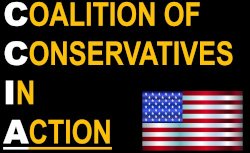Perhaps I am repeating something that you’ve already heard, but I wanted to alert anyone who is interested in the future of New Mexico that the “Clean Fuel Standard Act” (SB14) is really a disguised “Cap and Trade” bill that would link New Mexico’s economy to “another state” that is also engaged in a similar Cap and Trade system (like California?). This statement is buried deep in the bill at para. 3.D (11).
This is the same sort of bill that got then congressman Harry Teague in such trouble with his Hobbs and Artesia constituents.
Why would this be such a bad bill? Let’s start with the phony definitions used to justify it.
Definition B. “Carbon Intensity” “means the quantity of fuel
lifecycle emissions per unit of fuel energy, expressed in grams
of carbon dioxide equivalent per megajoule;”
I have a big problem with this definition. Notice that the focus is only on the lifecycle emissions per unit of fuel energy produced.
But what about the carbon costs of mining, refining, manufacturing, transporting, and installing the equipment needed to produce these fuels? Solar panels only last for 20-25 years. So their lifecycle costs in terms of energy and pollution in their manufacture should also be included in such calculations. A similar situation occurs for Wind turbines, which require a considerable amount of mined concrete, steel, copper, and rare earth minerals in the manufacture and in the transport of the components to their installation point. Wind turbines also have an expected life cycle.
Unless such energy expenditures are factored in properly to the evaluation of the energy “savings” to be gained from the use of such technologies there is no way to fairly and accurately evaluate the benefits of such energy producing resources.
In effect, through this distorted definition, they are lying to the public about the supposed “CLEAN” benefits of such investments.
Section 3, paragraph D (4) explicitly establishes that a process for “providers” to comply with the Clean Fuel Standard Act will be enacted via obtaining and retiring energy credits.
Next, Section 3, Paragraph D (5) establishes “a mechanism for the generation of credits which may include projects in the … energy, film (?), forestry, manufacturing, methane capture and use, mining, oil and gas, transportation, including transportation infrastructure or manufacturing, waste management or wastewater treatment sectors” … and provides further that, “to be eligible for a credit pursuant to this paragraph, carbon sequestration and direct air capture projects shall result in additional, quantifiable, verifiable, permanent and enforceable greenhouse gas emission reductions in New Mexico;”
My comment/question is “Why should it be that the only projects that need to provide “Permanent,” “Quantifiable,” and “Verifiable” results are in the “carbon sequestration and direct air capture projects” area? Shouldn’t there be a fair and balanced requirement that other projects not in these two areas should need to prove that they can produce “permanent,” “quantifiable,” and “verifiable” results?
For example, much of the legislation appears to be intent on driving New Mexicans away from driving gasoline or diesel powered vehicles unless the fuels for these vehicles are supplied by bio-diesel or other agriculturally produced means. Paragraph 3.D (13) explicitly states, “require electric utilities that generate credits from electricity used as transportation fuel to use at least fifty percent of the revenues generated from the credits for transportation electrification projects, rebates for electric vehicle purchases or the provision of direct benefits
for current electric vehicle customers…”
This is a blatant manipulation of the market system that benefits electric vehicle (EV) manufacturers over traditional gasoline/diesel powered cars and trucks. Yet it also would force utility companies to redirect their credits to support purchases of EVs and modifying the electric grid to support such vehicles.
And who will pay for the billions in costs necessary to support such a system? Apparently the public.
The promoters of this plan act as though it will be cost free. Read the editorial in today’s Sun News and it sounds as though this project has no costs at all. But here we see that the costs are being passed on to energy providers in the form of compliance regulations and paying for third-party “verification” auditors (para. 3.D (10)). And where do the providers get the money to pay for all this except from consumers.
Next, Section 3.F gives the agriculture sector a special dispensation to avoid market-damaging effects of the CFSA. Why should they be given special treatment and not other sectors impacted by this vicious law?
All told, this bill would be extremely damaging to any producer of oil and natural gas in our state, as well as any “provider” who imports vehicle fuels across the New Mexico border into our state.
Yet the real costs of transforming from an oil and diesel fueled fleet of vehicles to a nearly exclusive EV fleet is not being honestly and fairly evaluated due to the underhanded means of computing the overall environmental impacts of so-called “Clean” energy alternatives to oil and natural gas fueled vehicles.
David Tofsted, Ph.D., Electrical Engineering, NMSUFormer senior research physicist, US Army Research Laboratory, White Sands Missile Range, NM
![]()
